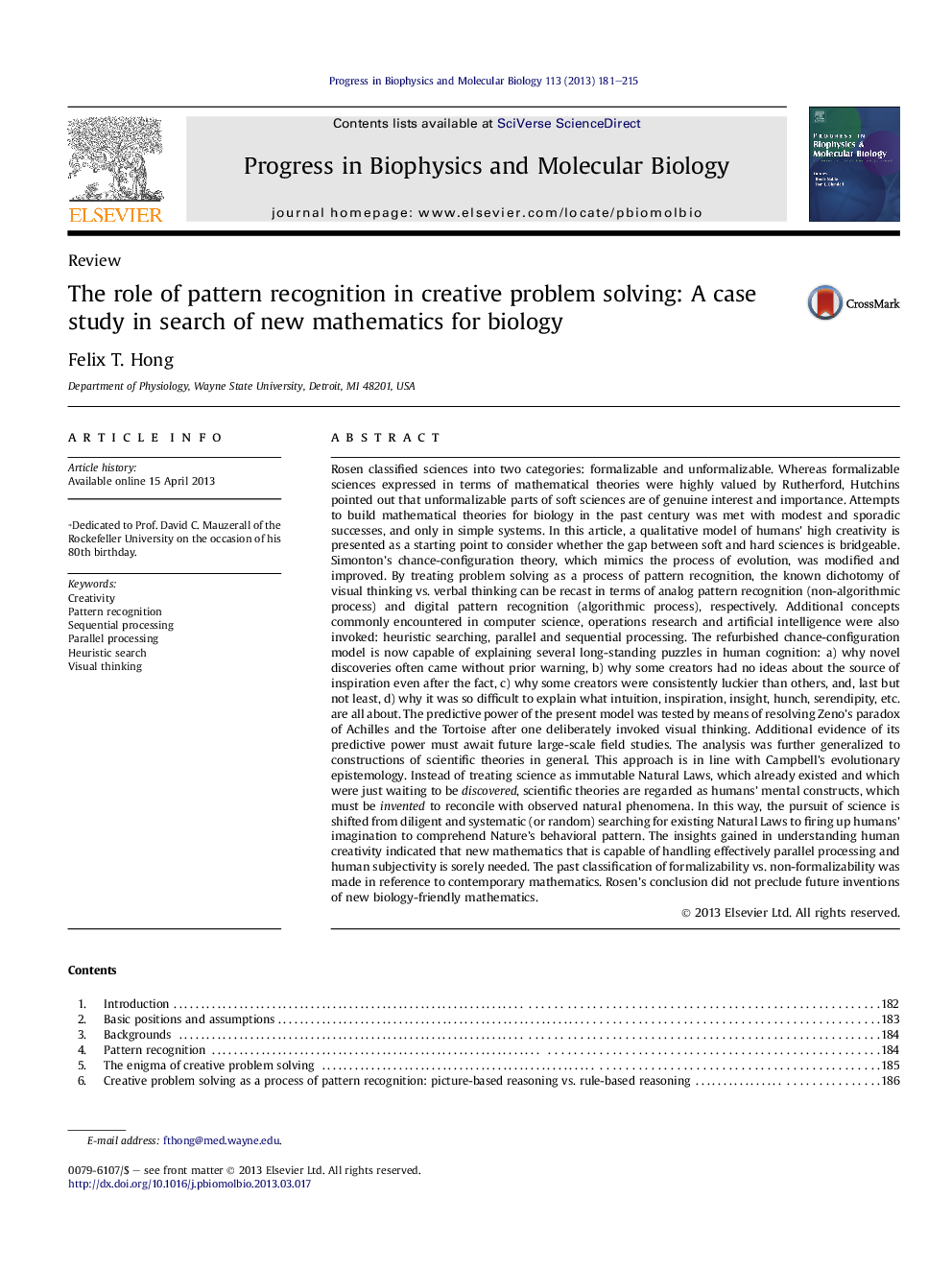| Article ID | Journal | Published Year | Pages | File Type |
|---|---|---|---|---|
| 2070066 | Progress in Biophysics and Molecular Biology | 2013 | 35 Pages |
Rosen classified sciences into two categories: formalizable and unformalizable. Whereas formalizable sciences expressed in terms of mathematical theories were highly valued by Rutherford, Hutchins pointed out that unformalizable parts of soft sciences are of genuine interest and importance. Attempts to build mathematical theories for biology in the past century was met with modest and sporadic successes, and only in simple systems. In this article, a qualitative model of humans' high creativity is presented as a starting point to consider whether the gap between soft and hard sciences is bridgeable. Simonton's chance-configuration theory, which mimics the process of evolution, was modified and improved. By treating problem solving as a process of pattern recognition, the known dichotomy of visual thinking vs. verbal thinking can be recast in terms of analog pattern recognition (non-algorithmic process) and digital pattern recognition (algorithmic process), respectively. Additional concepts commonly encountered in computer science, operations research and artificial intelligence were also invoked: heuristic searching, parallel and sequential processing. The refurbished chance-configuration model is now capable of explaining several long-standing puzzles in human cognition: a) why novel discoveries often came without prior warning, b) why some creators had no ideas about the source of inspiration even after the fact, c) why some creators were consistently luckier than others, and, last but not least, d) why it was so difficult to explain what intuition, inspiration, insight, hunch, serendipity, etc. are all about. The predictive power of the present model was tested by means of resolving Zeno's paradox of Achilles and the Tortoise after one deliberately invoked visual thinking. Additional evidence of its predictive power must await future large-scale field studies. The analysis was further generalized to constructions of scientific theories in general. This approach is in line with Campbell's evolutionary epistemology. Instead of treating science as immutable Natural Laws, which already existed and which were just waiting to be discovered, scientific theories are regarded as humans' mental constructs, which must be invented to reconcile with observed natural phenomena. In this way, the pursuit of science is shifted from diligent and systematic (or random) searching for existing Natural Laws to firing up humans' imagination to comprehend Nature's behavioral pattern. The insights gained in understanding human creativity indicated that new mathematics that is capable of handling effectively parallel processing and human subjectivity is sorely needed. The past classification of formalizability vs. non-formalizability was made in reference to contemporary mathematics. Rosen's conclusion did not preclude future inventions of new biology-friendly mathematics.
